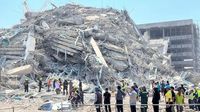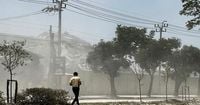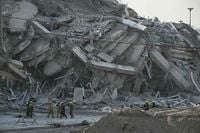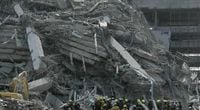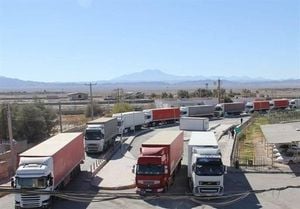A powerful earthquake of magnitude 7.7 struck central Myanmar on Friday, March 28, 2025, causing widespread panic and significant structural damage across the region, including in Thailand. The tremor, which occurred at 12:50 PM local time (7:20 CET), had its epicenter located about 17 kilometers from Mandalay, Myanmar's second-largest city, at a depth of just 10 kilometers, according to the United States Geological Survey (USGS).
Reports indicate that several buildings collapsed in Mandalay, including parts of the historic Mandalay Palace, which suffered severe damage. Eyewitness accounts from local media, including Myanmar Now, described scenes of chaos as residents fled their homes and workplaces. In Naypyidaw, the capital of Myanmar, roads buckled under the force of the quake, leading to evacuations in various buildings.
The tremor was felt not only in Myanmar but also across a wide area, including northern Thailand and parts of China, where officials reported tremors reaching Yunnan province, with a recorded magnitude of 7.9. In Chiang Mai, a resident named Duangjai recounted, "I heard it and was sleeping in the house. I ran as far as I could in my pajamas to get out of the building." Another local, 76-year-old Sai, said, "This is the strongest tremor I have ever experienced."
In Bangkok, approximately 1,000 kilometers from the epicenter, the earthquake caused a 30-story building under construction to collapse, trapping at least 43 workers inside. Emergency services rushed to the scene near the popular Chatuchak market, where panic ensued as people evacuated nearby buildings. Fraser Morton, a Scottish tourist shopping at a local mall, described the moment: "Suddenly, the whole building started to move; there was screaming and a lot of panic."
The earthquake's aftershocks were also felt, with a significant 6.4 magnitude tremor occurring shortly after the initial quake. In the wake of the disaster, Thailand's Prime Minister, Paetongtarn Shinawatra, interrupted an official visit to convene an urgent meeting to assess the situation. The Disaster Prevention Department of Thailand reported that the earthquake was felt in nearly all regions of the country, leading to the temporary suspension of metro and light rail services in Bangkok.
As rescue operations began, officials reported at least 15 injuries and significant structural damage to more than 40 buildings across the affected areas. The ASEAN (Association of Southeast Asian Nations) has mobilized resources to assist in the emergency response. However, access to rural areas remains challenging, complicating efforts to gather accurate information about casualties and damage.
Myanmar is located in a seismically active region due to the interaction of the Indian and Eurasian tectonic plates. Historically, the Sagaing fault, which runs through the country, has been responsible for several significant earthquakes. Between 1930 and 1956, at least six earthquakes of magnitude 7 or greater were recorded in this area. Experts have noted that the rapid urban development in Myanmar, combined with inadequate infrastructure and urban planning, has increased the vulnerability of cities to such natural disasters.
This earthquake is one of the most powerful to hit the region in recent years, with the last major quake occurring in 2016, which registered a magnitude of 6.8 and resulted in three fatalities and damage to historical structures in Bagan. The current disaster highlights the ongoing challenges facing Myanmar, particularly in the wake of the military coup in 2021, which has left the country's emergency response systems weakened.
As rescue teams continue to search for survivors in the rubble of the collapsed building in Bangkok and assess the damage in Myanmar, the full extent of the disaster remains unclear. The international community is closely monitoring the situation, with humanitarian organizations preparing to provide assistance as needed.
In summary, the earthquake has not only caused immediate destruction but also raised concerns about the long-term implications for Myanmar and Thailand, as both countries grapple with the aftermath of this natural disaster. The combination of geological vulnerability and socio-political instability poses significant risks for future preparedness and response efforts.
